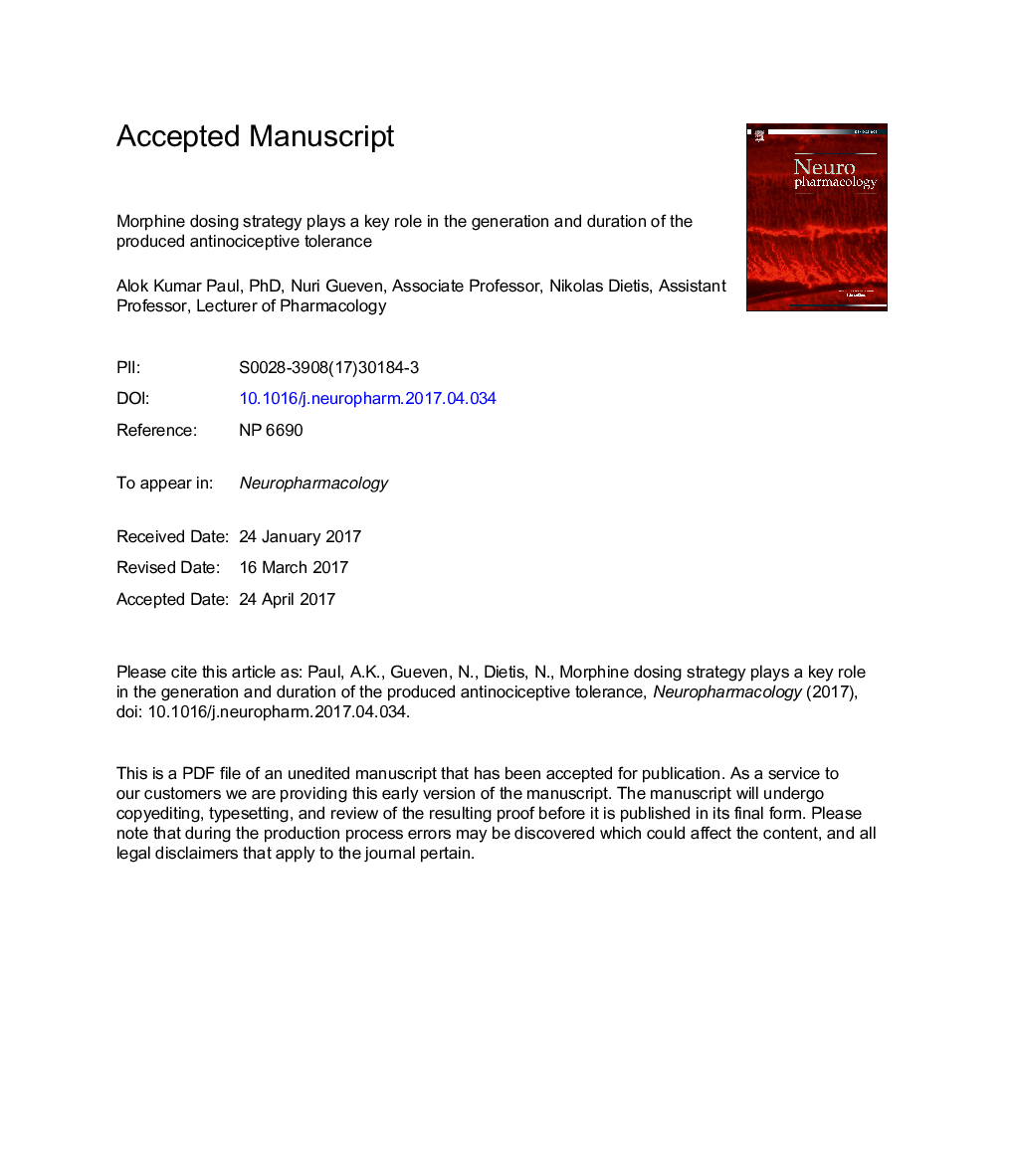| کد مقاله | کد نشریه | سال انتشار | مقاله انگلیسی | نسخه تمام متن |
|---|---|---|---|---|
| 5548891 | 1556596 | 2017 | 37 صفحه PDF | دانلود رایگان |
عنوان انگلیسی مقاله ISI
Morphine dosing strategy plays a key role in the generation and duration of the produced antinociceptive tolerance
ترجمه فارسی عنوان
استراتژی دوز مورفین، نقش کلیدی در تولید و مدت تحمل ضد وابستگی تولید شده ایفا می کند
دانلود مقاله + سفارش ترجمه
دانلود مقاله ISI انگلیسی
رایگان برای ایرانیان
کلمات کلیدی
موضوعات مرتبط
علوم زیستی و بیوفناوری
علم عصب شناسی
علوم اعصاب رفتاری
چکیده انگلیسی
Antinociceptive tolerance after repetitive administration of morphine severely limits its clinical use. Despite increased mechanistic understanding of morphine tolerance, little is known about the influence of dosing regimens in its development. We hypothesized that the starting dose of morphine, dosing frequency and dose increments, influence antinociception and the manifestation of antinociceptive tolerance in rats. Male rats were randomly divided into four groups with different intermittent starting-doses of daily morphine (b.i.d.) followed by different increments of single-dose morphine upon development of antinociceptive tolerance, for 2-3 weeks: 2.5 (b.i.d.)â5 â 10â15 mg/kg/day, 5 (b.i.d.)â10 mg/kg/day, 5 (b.i.d.)â15 mg/kg/day, 10 (b.i.d.)â20 mg/kg/day. Antinociception was assessed daily pre-treatment and at several time-points over 2 h post-administration, using tail-flick and hot-plate assays. Tolerance was defined as significant antinociceptive desensitization and was presented as significant reduction of the maximum and total antinociceptive efficacy upon morphine administration. Rats commenced on 2.5 mg/kg/day (b.i.d.) morphine developed tolerance faster than those started on 5 or 10 mg/kg/day (b.i.d.). Comparatively, higher starting and maintenance doses of morphine produced prolonged antinociception and delayed tolerance. Whereas, lower starting and maintenance doses of morphine produced less total antinociception during the course of treatment and did not delay the onset of tolerance, but require smaller dose-increments to reach antinociception after development of antinociceptive tolerance. These results suggest that morphine starting dose, dosing frequency, increments and timing determine the manifestation of antinociceptive tolerance and extent of antinociception. In addition, our results also highlight the need for generally standardized and validated assay protocols and procedures to compare different studies, as a prerequisite to translate pre-clinical results into the clinic.
ناشر
Database: Elsevier - ScienceDirect (ساینس دایرکت)
Journal: Neuropharmacology - Volume 121, 15 July 2017, Pages 158-166
Journal: Neuropharmacology - Volume 121, 15 July 2017, Pages 158-166
نویسندگان
Alok Kumar (MSc), Nuri (PhD), Nikolas (PhD),
